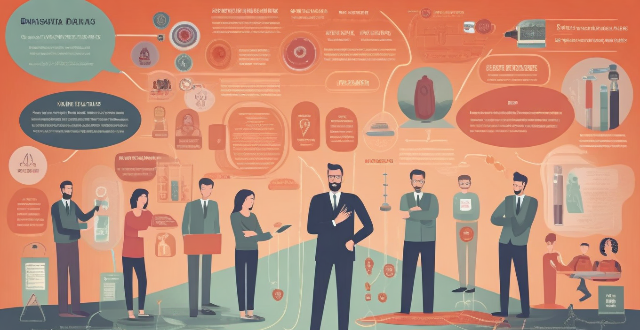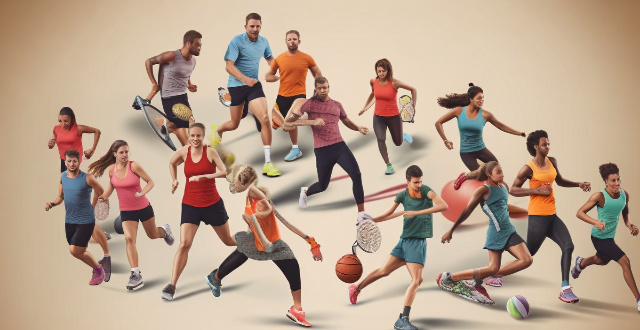Unboxing Help

What are some tips for filming a successful unboxing video ?
Unboxing videos have become increasingly popular in recent years, with viewers tuning in to see the latest products being unveiled and reviewed. If you're looking to create a successful unboxing video, here are some tips to help you get started: 1\. Choose the Right Product - Research Popular Products: Look for products that are currently trending or highly anticipated by consumers. This will increase the likelihood of your video being watched and shared. - Consider Your Audience: Think about who your target audience is and what products they would be interested in seeing unboxed. This will help you choose a product that resonates with them. 2\. Set Up Your Shooting Space - Find a Well-Lit Area: Natural lighting is ideal, but if that's not possible, make sure to set up additional lighting sources to avoid any shadows or dark areas in your footage. - Clear the Background: Remove any clutter from the background to keep the focus on the unboxing process. A clean, simple background will also make your video look more professional. 3\. Use Quality Equipment - Invest in Good Camera: A high-quality camera will produce clearer, sharper images, making your video more enjoyable to watch. - Use a Tripod or Gimbal: To stabilize your shots, use a tripod or gimbal to eliminate shaky footage and keep your camera steady throughout the unboxing process. 4\. Plan Your Shots - Create a Shot List: Plan out each shot you want to capture during the unboxing process, including close-ups of the product and its features. This will help you stay organized and ensure that you don't miss any important details. - Vary Your Angles: Incorporate different angles and perspectives into your shots to keep things interesting for your viewers. For example, you could start with a wide shot of the entire package, then move in for closer shots of specific details. 5\. Keep It Short and Sweet - Focus on Key Points: Don't spend too much time on unnecessary details or long introductions. Instead, focus on showcasing the product and its features in an engaging way. - Edit Your Footage: After filming, take some time to edit your footage together into a cohesive video. Cut out any unnecessary parts and add transitions between shots to make it flow smoothly. 6\. Engage with Your Audience - Add Commentary: As you unbox the product, provide commentary on what you're seeing and how it feels. Share your thoughts on the product's design, functionality, and overall quality. - Encourage Interaction: Ask questions or encourage viewers to leave comments about their experiences with similar products. This will help build a sense of community around your video and increase engagement.

How long should my unboxing videos be ?
This article discusses the importance of video length for unboxing videos, considering factors like audience attention span, product complexity, and platform requirements. It suggests best practices for creating engaging unboxing videos, including capturing viewers' interest, showcasing features, providing realistic feedback, and addressing pain points. The article also offers tips for keeping videos engaging, such as using visual aids, maintaining consistency, and encouraging audience engagement.

What is the best way to create an engaging unboxing video ?
Unboxing videos are a popular trend in product reviews and demonstrations, offering viewers a firsthand look at a product, its packaging, and the unboxing experience. To create an engaging unboxing video, it's important to plan your content, choose the right equipment, set the scene, start with a bang, showcase the product, share your thoughts, keep it short and sweet, and end with a call-to-action. By following these tips, you can produce a compelling video that showcases your product in an exciting and informative way.

How do I make my unboxing videos stand out from others ?
Unboxing videos have become a popular trend in the digital world, with millions of viewers tuning in to watch their favorite influencers unveil new products. However, with so many unboxing videos available online, it can be challenging to make yours stand out from the crowd. In this article, we will discuss some tips and tricks to help you create unique and engaging unboxing videos that will capture your audience's attention. ### 1\. Plan Your Content Before you start shooting your unboxing video, it's essential to plan your content carefully. Here are some things to consider: - **Choose the Right Product**: Select a product that is interesting and relevant to your audience. It could be something new or highly anticipated, or even a product that has received mixed reviews. - **Research the Product**: Familiarize yourself with the product's features, specifications, and benefits. This will help you create a more informative and engaging video. - **Create an Outline**: Jot down the key points you want to cover in your video, such as the packaging design, product features, pros and cons, and your personal opinion. ### 2\. Set Up Your Shooting Space The setting of your unboxing video can play a significant role in its overall appeal. Here are some tips for setting up your shooting space: - **Choose a Well-Lit Area**: Ensure that your shooting space is well-lit to produce high-quality footage. Natural light is always a good option, but if that's not possible, invest in some good lighting equipment. - **Keep the Background Simple**: A cluttered background can be distracting for your viewers. Keep your shooting space clean and simple, with minimal distractions. - **Use a Stable Surface**: Place your product on a stable surface to avoid any shaky footage during the unboxing process. ### 3\. Use High-Quality Equipment Using high-quality equipment can significantly improve the overall quality of your unboxing video. Here are some essential items to consider: - **Camera**: Invest in a good quality camera or smartphone with a high-resolution lens. This will ensure that your footage is crisp and clear. - **Microphone**: Good audio quality is crucial for keeping your viewers engaged. Use an external microphone or ensure that your built-in microphone is of good quality. - **Tripod/Gimbal**: To avoid shaky footage, use a tripod or gimbal to stabilize your camera during the shoot. ### 4\. Add Personal Touches Personal touches can help make your unboxing video more relatable and engaging for your audience. Here are some ideas: - **Introduce Yourself**: Start by introducing yourself and telling your viewers why you chose this particular product. - **Share Your Thoughts**: Share your thoughts and opinions about the product as you unbox it. This will make your video more interactive and engaging. - **Involve Your Audience**: Ask your viewers for their opinions on the product or encourage them to share their experiences in the comments section. ### 5\. Edit Your Video Professionally Editing is an essential part of creating a compelling unboxing video. Here are some tips for editing your video professionally: - **Trim and Cut**: Remove any unnecessary parts of the video that don't add value to the content. - **Add Text and Graphics**: Include text overlays and graphics to highlight key points and make your video more visually appealing. - **Use Transitions**: Add smooth transitions between different scenes to make your video flow seamlessly. - **Include B-Roll Footage**: Incorporate additional footage, such as product demonstrations or behind-the-scenes clips, to make your video more engaging. ### 6\. Promote Your Video Effectively Once you've created your unboxing video, it's time to promote it effectively to reach a wider audience. Here are some promotional strategies: - **Optimize Your Video Title and Description**: Use relevant keywords in your video title and description to improve its searchability on YouTube and other platforms. - **Share on Social Media**: Share your unboxing video on your social media channels, such as Instagram, Facebook, and Twitter, to reach a broader audience. - **Collaborate with Other Influencers**: Partner with other influencers in your niche to cross-promote each other's content and expand your reach.

How often should I release new unboxing videos ?
Unboxing videos have become a popular genre on social media platforms, especially for tech enthusiasts and consumers who want to see the latest gadgets in action. As an unboxing video creator, you may be wondering how often you should release new videos to keep your audience engaged and growing. Here are some factors to consider: - Audience Demand: Listen to your audience's feedback and analyze engagement metrics to determine if they want more frequent content. - Product Release Cycles: Align your schedule with product release cycles, such as monthly smartphone releases or seasonal products like holiday toys. - Content Quality vs. Quantity: Maintain high-quality content by investing time in good lighting, clear audio, and thorough explanations of the products you're unboxing. Don't sacrifice quality for quantity. - Consistency: Set a consistent schedule for releasing videos, such as weekly or bi-weekly, and communicate this schedule to your audience through social media posts, email newsletters, or at the end of each video. - Personal Capacity: Consider how much time and resources you can realistically dedicate to creating and editing videos. It's better to set a manageable schedule than to burn out by trying to do too much. - Competitive Landscape: Look at what other unboxing channels are doing and find ways to differentiate your content from others in the market. Maybe it's through humor, in-depth analysis, or focusing on niche products. There is no one-size-fits-all answer to how often you should release new unboxing videos. The key is to find a balance that works for you and your audience while maintaining quality and sustainability over time. By considering these factors, you can develop a strategy that keeps your viewers coming back for more.

What equipment do I need to start making unboxing videos ?
To start making unboxing videos, you'll need: 1. A camera or smartphone with at least 1080p resolution, image stabilization, and manual settings for clear, stable footage. 2. A tripod or gimbal to ensure steady shots and easy adjustments. 3. A microphone that provides clear audio and is easily connectable to your recording device. 4. Lighting equipment like softboxes, LED ring lights, and reflectors for even illumination. 5. A simple, clean background that is consistent across videos for brand recognition. 6. User-friendly editing software with features like color correction and audio mixing. 7. Extra accessories such as high-speed memory cards, spare batteries, and lens cleaning kits. 8. Props and tools for unboxing, including a letter opener, gloves, and measurement tools. Remember, while having the right equipment is crucial, your creativity, presentation skills, and consistency in publishing content are also key factors in the success of your unboxing channel.

What are some common mistakes to avoid when making an unboxing video ?
Unboxing videos are a popular way for consumers to get a closer look at products before making a purchase. However, there are some common mistakes that content creators should avoid when making these videos. These include lack of preparation such as not researching the product and inadequate lighting and sound quality. Additionally, focusing too much on packaging and ignoring the unboxing experience can also be detrimental. Neglecting post-production editing can result in inconsistent video quality and ineffective editing techniques. By avoiding these mistakes, content creators can create engaging and informative unboxing videos that resonate with their audience.

How can I monetize my unboxing videos ?
This comprehensive guide offers various strategies for monetizing unboxing videos, such as earning through advertising revenue, sponsored content, selling merchandise, crowdfunding, and licensing content. It emphasizes the importance of consistency, audience engagement, and content quality to attract viewers and potential revenue streams.

What are the benefits of creating unboxing videos for my business ?
Unboxing videos offer a unique marketing opportunity for businesses to showcase products authentically and engagingly, increasing brand awareness, enhancing customer trust, improving conversion rates, providing cost-effective marketing, and giving a competitive edge.

How can I promote my unboxing videos on social media ?
To effectively promote unboxing videos on social media, optimize the video content for high quality and SEO, share across multiple platforms like YouTube, Instagram, Facebook, Twitter, and TikTok. Engaging with the audience through comments, giveaways, and collaborations can build a community. Paid advertising and analyzing performance can also boost visibility. Consistency and quality are crucial for online success.

Are there any foods that can help alleviate stress ?
The text provides a summary of foods that can help alleviate stress, including dark chocolate, avocado, blueberries, salmon, and chamomile tea. Each food is explained in terms of its benefits and recommended intake. The article emphasizes that while these foods may help reduce stress levels, they should not be used as a substitute for professional medical advice or treatment.

Does lifting weights help with weight loss ?
Weight loss is a common goal for many people, and weightlifting is one of the most popular methods. However, does lifting weights help with weight loss? This article explores the benefits and drawbacks of weightlifting as a means of weight loss. One of the main benefits of weightlifting is muscle growth, which can lead to an increase in metabolism and help with weight loss. In addition, weightlifting can also help with fat burning and improved cardiovascular health. However, there are also some potential drawbacks to weightlifting, including high initial costs, potential injuries, and a significant time commitment. If you are interested in trying weightlifting as a way to lose weight, make sure you do your research and find a program that fits your needs and lifestyle.

Can ESG principles help mitigate climate change ?
ESG principles, which stand for Environmental, SocialESG principles, which stand for Environmental, Social, have become increasingly important in These principles aim to encourage companies to operate in a more sustainable and socially responsible manner. In this context, it is worth exploring whether these principles can help mitigate climate change. The environmental aspect of ESG focuses on reducing the negative impact of business operations on the environment. This includes reducing greenhouse gas emissions, conserving natural resources, and minimizing waste generation. By promoting these practices, ESG principles can contribute to mitigating climate change in several ways: * Reducing Carbon Emissions: Companies that prioritize environmental sustainability are likely to reduce their carbon footprint by using renewable energy sources, improving energy efficiency, and investing in low-carbon technologies. This can help lower global greenhouse gas emissions, which are a major driver of climate change. * Conserving Natural Resources: By promoting sustainable resource management, ESG principles can help reduce deforestation, protect biodiversity, and conserve water resources. These actions can help maintain the health of ecosystems that play a crucial role in regulating the Earth's climate. * Minimizing Waste Generation: Encouraging companies to adopt circular economy models and reduce waste generation can help reduce the amount of greenhouse gases produced during waste disposal processes. Additionally, recycling and reusing materials can help conserve natural resources and reduce the need for new raw material extraction, further contributing to climate change mitigation. The social aspect of ESG focuses on promoting fair labor practices, human rights, and community involvement. While these principles may not directly address climate change, they can indirectly contribute to mitigating its effects by fostering a sense of corporate responsibility and encouraging companies to invest in their communities. This can lead to increased awareness and action around climate change issues, as well as support for policies and initiatives aimed at addressing the problem. The governance aspect of ESG emphasizes transparency, accountability, and ethical behavior within a company's management structure. By promoting good governance practices, ESG principles can help ensure that companies are held accountable for their environmental impact and are more likely to adopt sustainable business strategies. This can lead to increased transparency around carbon emissions reporting, better alignment between corporate goals and climate objectives, and improved stakeholder engagement on climate-related issues. In conclusion, ESG principles can certainly help mitigate climate change by promoting environmentally sustainable business practices, fostering a sense of corporate responsibility, and ensuring transparency and accountability within companies' management structures. However, it is important to note that these principles alone may not be sufficient to fully address the complex challenges posed by climate change. A comprehensive approach involving government policies, international cooperation, and individual actions will also be necessary to achieve meaningful progress in mitigating the effects of climate change.

Can sport monitoring technology help prevent injuries ?
Sport monitoring technology has become increasingly popular in recent years, with many athletes and coaches using it to improve performance and prevent injuries. This technology includes wearable devices such as fitness trackers, heart rate monitors, and GPS tracking systems, as well as more advanced technologies like motion capture systems and force plates. Sport monitoring technology works by collecting data on an athlete's movements, heart rate, and other physiological factors. This data is then analyzed to provide insights into the athlete's performance and identify areas where they may be at risk of injury. By tracking an athlete's movements and physiological factors, sport monitoring technology can identify potential injury risk factors early on, help coaches create personalized training plans for each athlete based on their individual needs and abilities, monitor recovery periods between sessions, and educate athletes and coaches about injury prevention strategies. Overall, there is evidence to suggest that sport monitoring technology can help prevent injuries in several ways. However, it is important to note that no technology can completely eliminate the risk of injury, and proper training, conditioning, and safety measures should always be prioritized.

Can exercise help manage symptoms of ADHD ?
Exercise can be a powerful tool in managing symptoms of ADHD by improving focus, reducing impulsivity, increasing energy levels, and promoting better sleep. Choosing the right type of exercise, setting realistic goals, and creating a consistent routine are essential for reaping the full benefits of physical activity for ADHD management.

How does exercise help in managing stress ?
Stress is an inevitable part of life, but regular exercise can help manage it effectively. Exercise releases endorphins, reduces muscle tension, improves sleep quality, boosts self-esteem and confidence, provides a sense of accomplishment, and promotes social interaction. To incorporate exercise into your daily routine, start slowly, find an activity you enjoy, make it a part of your routine, mix up your routine, and don't overexert yourself. By doing so, you can reap the numerous benefits of exercise for stress management and overall well-being.

Can certain foods help reduce inflammation in athletes
Certain foods can help reduce inflammation in athletes. These include anti-inflammatory spices, fruits and vegetables, whole grains, healthy fats, and protein. It's also important to avoid processed foods, sugary drinks, and red meat. By eating a balanced diet full of healthy foods, athletes can reduce inflammation and improve their performance.

Can engaging in sports help with weight management ?
Engaging in sports can help with weight management by increasing calorie burn, improving metabolism, increasing muscle mass, reducing the risk of obesity-related diseases, and providing mental health benefits. However, a healthy diet and lifestyle habits are also essential for long-term success.

Can physical therapy help with sports injury recovery ?
Physical therapy is beneficial for sports injury recovery, addressPhysical therapy is beneficial for sports injury recovery, address restoration, injury prevention, and addressing pain management, function restoration, injury prevention, and supporting a safe return to activity. It involves assessment, diagnosis, manual therapy, range of motion exercises, strengthening exercises, stretching, balance training, functional training, gradual increase in activity, and education on injury prevention and home exercise programs.

Can strength training help improve my running performance ?
Strength training is an essential component of any fitness program, including running. It helps to build muscle strength and endurance, which can significantly improve your running performance. Strength training can help increase muscle strength and endurance, improve running economy, reduce the risk of injury, and enhance posture and body alignment. To incorporate strength training into your running routine, start slowly with light weights and gradually increase intensity over time. Choose exercises that target major muscle groups used during running, such as glutes, hamstrings, quadriceps, calves, and core muscles. Incorporate plyometric exercises to improve explosive power and acceleration. Allow sufficient recovery time between sessions to avoid overtraining and potential injuries.

Can team sports help in coping with pressure ?
Team sports can help cope with pressure by developing resilience, building confidence, providing supportive networks, and teaching time management.

How can technology help in managing a sports career ?
Technology plays a crucial role in managing a sports career. It can help athletes improve their performance, track their progress, and stay connected with their fans and sponsors. Here are some ways technology can assist in managing a sports career: 1. Performance Tracking: Wearable devices such as fitness trackers, smartwatches, and heart rate monitors can help athletes track their physical activity, sleep patterns, and overall health. Video analysis software allows coaches and athletes to review game footage, identify areas for improvement, and develop strategies for future competitions. 2. Training Optimization: Virtual Reality (VR) technology can simulate various environments and scenarios, allowing athletes to train in a controlled setting without the risk of injury. Machine learning algorithms can analyze an athlete's training data and provide personalized recommendations for improving performance and reducing the risk of injury. 3. Injury Prevention and Recovery: Biometric data such as heart rate variability, muscle oxygenation, and fatigue levels can help coaches and trainers monitor an athlete's recovery status and adjust their training accordingly. Technological advancements in rehabilitation, such as electrotherapy, ultrasound therapy, and robotic assistance, can aid in faster recovery from injuries. 4. Nutrition and Hydration: Smart water bottles can track an athlete's hydration levels throughout the day and remind them when it's time to drink water. Nutrition apps can help athletes plan their meals, track their calorie intake, and ensure they are getting the necessary nutrients for optimal performance. 5. Communication and Networking: Social media platforms allow athletes to connect with fans, share their experiences, and promote their personal brand. Sports management software can help athletes manage their schedules, communicate with coaches and teammates, and keep track of their finances and sponsorships. 6. Mental Health Support: Mindfulness apps can help athletes manage stress, improve focus, and enhance their mental well-being. Teletherapy services enable athletes to access mental health support remotely, ensuring they have the resources needed to maintain their mental health while on the road or competing abroad.

How does stretching help with recovery after a workout ?
Stretching is crucial for recovery after a workout. It improves blood circulation, reduces muscle soreness and stiffness, enhances flexibility, promotes better range of motion, prevents injury, and reduces stress. Incorporating stretching into your post-workout routine can greatly enhance your recovery process.

How can team sports help in individual skill development ?
Team sports contribute significantly to individual skill development by improving communication skills, enhancing leadership abilities, increasing self-confidence, bettering time management, improving social skills, promoting physical fitness and coordination, providing opportunities to learn from mistakes, and fostering adaptability.

How do sports psychology techniques help with emotion regulation ?
This article explores the importance of emotion regulation in sports performance and how sports psychology techniques can help athletes regulate their emotions. The techniques discussed include self-talk, visualization, goal setting, breathing techniques, and mindfulness meditation. These techniques enable athletes to stay focused, confident, and motivated during competitions, leading to better performances. By incorporating these techniques into their training routines, athletes can learn to manage their emotions effectively and maintain optimal mental states for peak performance.

Can reading about sports help improve one's own athletic performance ?
Reading about sports can enhance athletic performance by providing insights into techniques, strategies, and mental approaches. It helps in technique improvement, mental preparation, and injury prevention. To apply this knowledge, set clear goals, choose relevant resources, practice what you learn, and seek feedback for adjustments.

How does sports medicine help prevent injuries in sports ?
The text discusses how sports medicine helps in preventing injuries in sports by providing athletes with necessary knowledge, skills, and resources for maintaining their health and safety. It outlines key ways such as pre-participation physical examinations, proper warm-ups, strength training programs, correct technique, injury management, and education. These measures aim to identify risks, prepare the body for exercise, enhance fitness levels, promote safe practices, and manage injuries effectively. Overall, sports medicine plays a vital role in fostering a culture of safety and well-being within sports communities.

Can exercise physiology help in managing stress and anxiety levels ?
Exercise physiology plays a significant role in managing stress and anxiety levels by promoting various physiological responses that counteract the negative effects of these conditions on the body. By incorporating regular physical activity into your lifestyle, you can improve your overall mental well-being and reduce the impact of stress and anxiety on your daily life.

How do sports help in the emotional regulation of teenagers ?
Adolescence is a period of significant emotional, physical, and psychological changes. Sports can play a crucial role in helping teenagers regulate their emotions effectively by promoting physical health, developing social skills, building self-esteem and confidence, providing an outlet for emotions, and teaching discipline and responsibility. Encouraging teenagers to participate in sports is an investment in their overall wellbeing and future success.

Can participating in sports activities help reduce loneliness in elderly people ?
Participating in sports activities can help reduce loneliness in elderly people by providing opportunities for social interaction, promoting psychological wellbeing, and offering a sense of purpose and accomplishment. Encouraging elderly individuals to engage in appropriate sports activities can be an effective way to address loneliness and improve their overall quality of life.